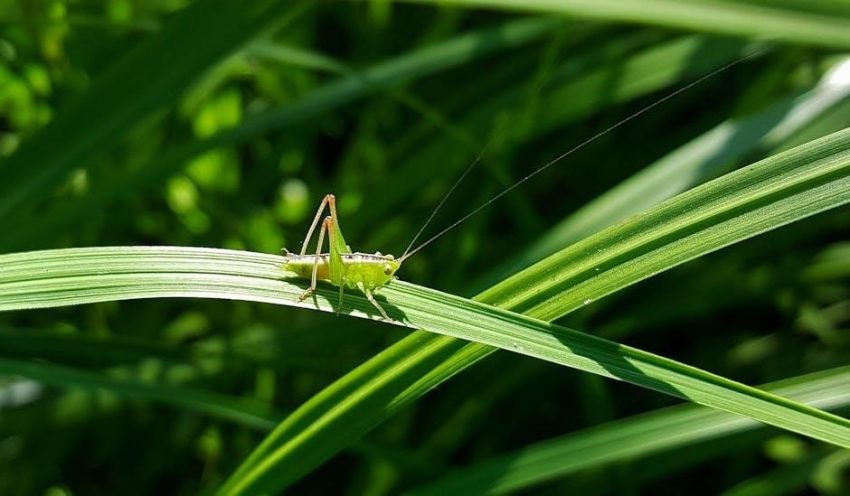Texas offers a diverse birding experience, with over 600 species documented. Its unique location along major migration routes makes it a hotspot for bird enthusiasts. From vibrant songbirds to majestic raptors, Texas’s varied habitats support a wide range of birdlife, making it a premier destination for birdwatchers. A reliable field guide is essential for identifying species and enhancing the birding adventure in the Lone Star State.

Overview of Field Guides
Field guides are essential for bird identification, featuring detailed descriptions, images, and range maps. Popular guides like Stan Tekiela’s and Peterson Field Guides offer comprehensive insights, aiding enthusiasts in identifying and learning about Texas birds.
2.1 Features of Top Field Guides
Top field guides for Texas birds are designed to enhance identification and learning. They typically include full-page, high-quality color photos of each species, often with insets showing seasonal or age-related variations. Many guides, such as Stan Tekiela’s Birds of Texas Field Guide, organize species by size or color for quick reference. Detailed descriptions cover plumage, habitats, and behaviors, while range maps illustrate where species can be found. Some guides also provide tips on bird behavior and vocalizations, aiding in accurate identification. Additionally, they often highlight unique characteristics that distinguish similar species. These features make field guides indispensable tools for birders of all skill levels, helping them navigate Texas’s rich avifauna effectively.
2.2 How to Use Field Guides Effectively
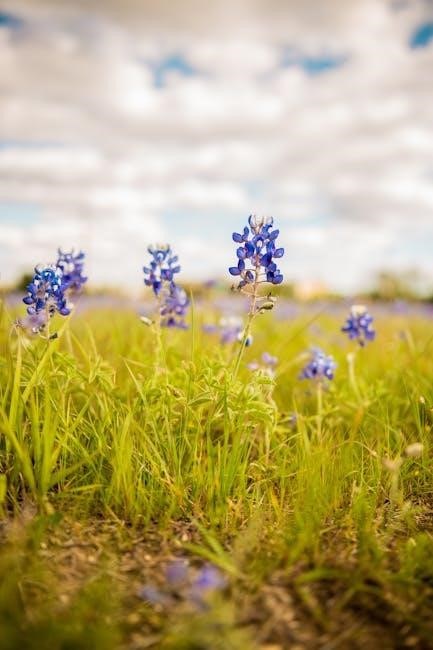
Using field guides effectively begins with observing a bird’s size, shape, and plumage. Note its color, distinctive field marks, and any unique behaviors. Listen to its calls, as sounds can be crucial for identification. Next, use the guide’s organization—whether by color, size, or habitat—to narrow down possibilities. Check range maps to confirm if the bird is likely in your location and consult seasonal information to account for migration patterns. Compare similar species to avoid misidentifications, focusing on key differences highlighted in the guide. For enhanced efficiency, consider using digital tools or apps alongside physical guides for searchable databases and filters. Practice regularly to build familiarity with birds and guide usage. Start with common species and gradually explore rarer ones. Keep a journal to record observations and cross-reference with the guide for better learning. By combining these strategies, you can maximize your birding success and enjoyment.
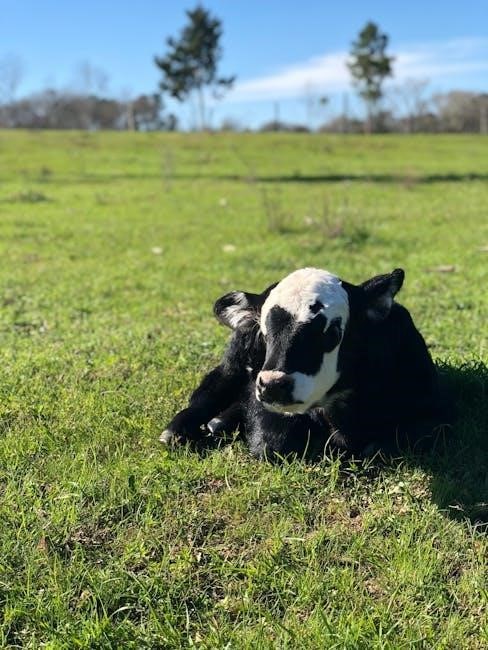
Common Bird Species in Texas
Texas is home to over 600 bird species, including backyard favorites like Northern Cardinals and Blue Jays. Birds of prey, waterfowl, and vibrant songbirds thrive across its diverse habitats, making it a birdwatcher’s paradise. The Birds of Texas Field Guide provides detailed descriptions and photos to help identify these species effectively.
3.1 Backyard Birds
Backyard birds are among the most familiar and accessible species for birders in Texas. These birds often visit residential areas, making them ideal for beginners to observe and study. Species like the Northern Cardinal, Blue Jay, and American Robin are common visitors to backyard feeders and gardens. The Birds of Texas Field Guide highlights these species with detailed descriptions and vibrant photos, helping enthusiasts identify and learn about their behavior. Many backyard birds are adaptable to urban environments, thriving in the presence of humans. They play a crucial role in local ecosystems by controlling insect populations and dispersing seeds. Feeding birds and creating bird-friendly habitats can attract a variety of species, enhancing the birding experience. Field guides like Stan Tekiela’s provide insights into the daily lives of these birds, making backyard birding both enjoyable and educational. This connection to nature fosters a deeper appreciation for wildlife conservation and the importance of preserving habitats for these feathered neighbors.
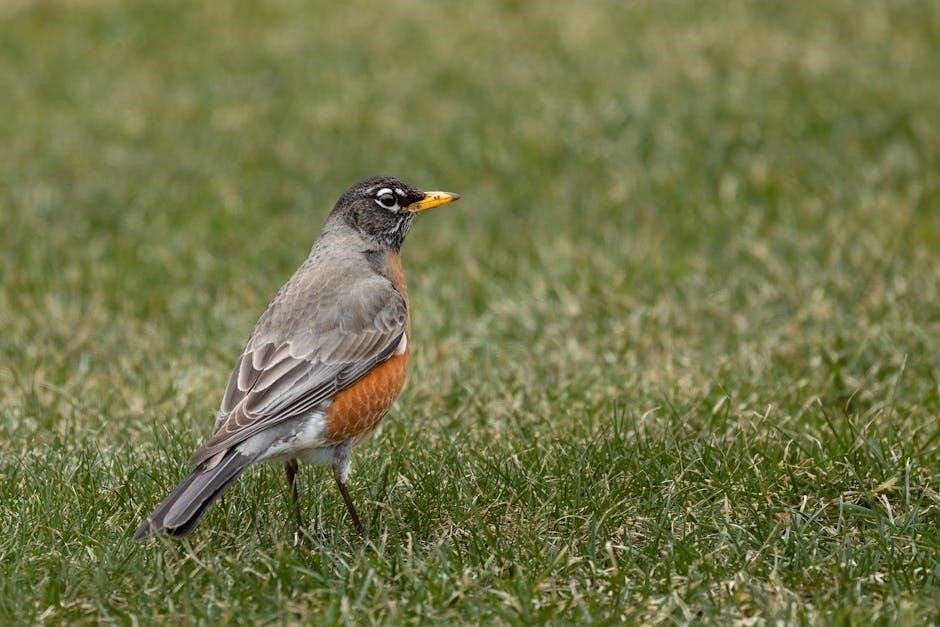
3.2 Birds of Prey
Birds of prey are a fascinating group of birds that thrive in Texas’s diverse landscapes. Species like hawks, eagles, falcons, and owls are prominent, showcasing their hunting prowess and adaptability. The Crested Caracara, a unique bird of prey, is known for its bold behavior, often chasing vultures from carcasses. Texas’s location along migration routes and its varied habitats make it an ideal place for spotting these predators. Field guides like the Birds of Texas Field Guide provide detailed insights into their behavior, plumage, and habitats, aiding in identification. Birds of prey play a vital role in maintaining ecological balance, controlling small mammal and bird populations; Their presence in both rural and urban areas highlights their resilience. From the soaring Red-tailed Hawk to the nocturnal Great Horned Owl, these birds captivate enthusiasts. Understanding their habits through field guides enhances the appreciation of these magnificent creatures and their importance in Texas’s wildlife landscape. Birders can explore their behavior, hunting strategies, and conservation status through comprehensive guides tailored to the region.
3.3 Waterfowl
Texas is a haven for waterfowl enthusiasts, with its diverse wetlands and coastal regions attracting a wide variety of species. Ducks, geese, and herons are among the most common waterfowl found in the state. The Crested Caracara, while not exclusively a waterfowl species, often patrols wetland areas, adding to the diversity. Field guides like the Birds of Texas Field Guide provide detailed insights into these birds, highlighting their plumage, behavior, and habitats. Waterfowl in Texas thrive in marshes, lakes, and coastal bays, with many species migrating through the state during spring and fall. Their unique adaptations, such as webbed feet and water-repellent feathers, make them well-suited to aquatic environments. Observing these birds in their natural habitats offers a fascinating glimpse into their daily lives, from foraging to social interactions. With the help of field guides, birders can better identify and appreciate the rich variety of waterfowl that call Texas home, whether seasonally or year-round.
3.4 Songbirds and Warblers
Texas is a paradise for spotting songbirds and warblers, with its rich habitats attracting a wide variety of these melodious birds. Species like the Cedar Waxwing, known for its sleek crest and social behavior, are common winter visitors. Warblers, such as the Yellow Warbler and Painted Bunting, add vibrant colors to the state’s woodlands and backyards. Field guides like Stan Tekiela’s Birds of Texas Field Guide offer detailed insights, with full-page color photos and descriptions of each species’ daily life and behavior. These guides often organize birds by color, making identification easier for enthusiasts. Songbirds and warblers in Texas are celebrated for their intricate songs and striking plumage, with many species migrating through the state during spring and fall. Their presence enriches the birding experience, whether in urban gardens or remote natural areas. By using field guides, birders can better understand and appreciate the unique characteristics of these birds, enhancing their connection to Texas’s avian diversity.

Bird Identification Tips
Identify Texas birds by size, plumage, beak shape, and behavior. Field guides like Stan Tekiela’s Birds of Texas Field Guide offer detailed descriptions and color photos, aiding quick and accurate species recognition for birders of all levels.
4.1 Visual Identification
Visual identification is a cornerstone of birding, relying on distinct physical traits like plumage, beak shape, and size. Field guides, such as Stan Tekiela’s Birds of Texas Field Guide, provide high-quality images and descriptions to aid in recognizing species. Pay attention to color patterns, feather markings, and seasonal variations, as these can differ between males and females. For instance, the bright orange of the Baltimore Oriole contrasts sharply with the duller hues of the female. Beak shape and size are also critical, as they often indicate dietary habits. For example, the large, curved beak of the Brown Pelican is adapted for scooping fish. Using a guide organized by color or size can streamline the identification process. Additionally, noting unique features like crests or tail feathers can help distinguish similar species. By combining these visual cues, birders can accurately identify Texas’s diverse avifauna, making every observation more rewarding and precise.
4.2 Behavioral Identification
Behavioral identification complements visual cues, offering insights into a bird’s habits and lifestyle. Observing how birds forage, fly, or interact with their environment can be key to accurate identification. For example, the Crested Caracara is known for its bold, aggressive behavior, often chasing vultures from carcasses; In contrast, the Cedar Waxwing is recognized by its social nature, often seen in flocks and feeding on berries. Field guides, such as the Birds of Texas Field Guide, detail these behaviors, helping birders distinguish similar species. Noting flight patterns is also crucial; the swift, direct flight of the American Kestrel differs from the soaring glide of a Red-tailed Hawk. Additionally, vocalizations are a powerful tool, as many species have distinctive calls. By combining behavioral observations with visual traits, birders can enhance their ability to identify Texas’s diverse avifauna effectively. This dual approach ensures a more comprehensive understanding of the birds and their unique characteristics.
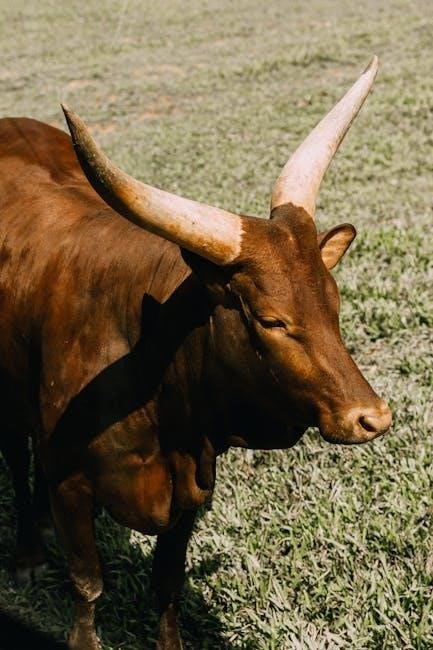
Birding Trails and Hotspots
Texas boasts an array of birding hotspots, including the Gulf Coast, Hill Country, and Panhandle. These regions attract diverse species, from waterfowl to songbirds. Trails like the Great Texas Coastal Birding Trail offer prime locations for spotting rare and migratory birds, making them essential destinations for enthusiasts.
5;1 Gulf Coast Birding
The Gulf Coast of Texas is a birding paradise, particularly during spring and fall migrations. It lies along the Central Flyway, a major migration route for millions of birds. Key hotspots include Bolivar Flats, Galveston Island, and Laguna Madre, where shorebirds, waterfowl, and songbirds converge. The region’s diverse habitats, from coastal wetlands to beaches, attract over 400 species annually. Birders can spot rarities like the Red Knot, Piping Plover, and Whooping Crane. The Gulf Coast is also vital for nesting and wintering species, such as the Snowy Plover and White Ibis. Its strategic location makes it a must-visit for both novice and experienced birders, offering unparalleled opportunities to observe a wide variety of avifauna in unique ecosystems.
5.2 Hill Country Birding
The Texas Hill Country offers a unique birding experience with its rolling hills, vast woodlands, and scenic rivers. This region is home to a variety of bird species, including the Golden-cheeked Warbler, a Texas endemic, and the Black-capped Vireo, both of which are species of special concern. Key birding locations include Lost Maples State Natural Area and Kerr Wildlife Management Area, where visitors can spot these birds in their natural habitats. The Hill Country’s diverse landscapes support a wide range of avifauna, from woodpeckers and owls to migratory songbirds. Birders can enjoy the region’s peaceful atmosphere while exploring its winding trails and waterways. The best times for birding are during spring and fall migrations, when the area comes alive with colorful warblers, tanagers, and orioles. With its rich biodiversity and picturesque settings, the Hill Country is a must-visit destination for bird enthusiasts in Texas.
5.3 Panhandle Birding
The Texas Panhandle, with its vast prairies, wetlands, and forests, is a haven for birders. This region is a critical stopover for migratory birds, offering a mix of habitats that attract diverse species. The High Plains of the Panhandle are known for hosting rare and unique birds, such as the Lesser Prairie-Chicken, a species of special concern. Wetlands like Buffalo Lake National Wildlife Refuge and playa lakes provide vital stopover points for waterfowl and shorebirds, including Snow Geese and American Avocets. During winter, the Panhandle is a key destination for snowy owls and other Arctic breeding species. Birding trails, such as the Great Texas Coastal Birding Trail, extend into the Panhandle, offering access to prime birding locations. Local parks, like Palo Duro Canyon State Park, also serve as hotspots for spotting species like the Canyon Wren and Rock Wren. The Panhandle’s open landscapes and seasonal bird activity make it a rewarding destination for both novice and experienced birders, with opportunities to observe species not commonly seen elsewhere in the state.
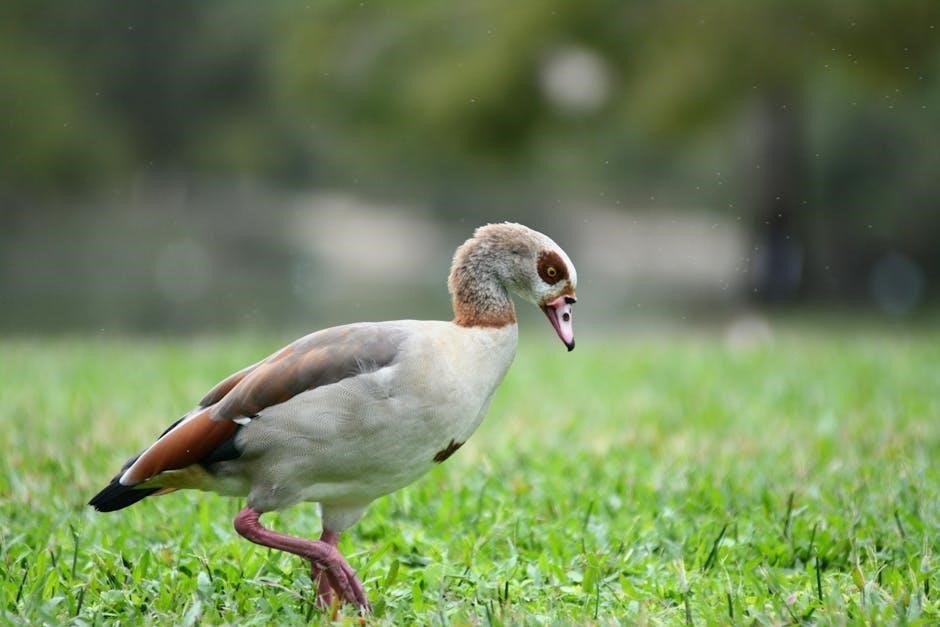
Seasonal Migration Patterns
Texas is a critical stopover for millions of migratory birds. Spring migration peaks from March to May, with songbirds and warblers abundant, while fall migration occurs from August to November, featuring waterfowl and raptors. Key habitats like coastal wetlands and forests support these journeys, making Texas vital for both breeding and wintering species. Understanding these patterns enhances birding experiences and conservation efforts.
6.1 Spring Migration
Spring migration in Texas is a spectacular event, drawing birders from across the globe. From late February to early May, millions of birds pass through the state, with the Gulf Coast being a particularly critical stopover. This period is marked by the arrival of neotropical migrants, such as warblers, tanagers, and orioles, which flock to Texas’s lush forests and coastal wetlands. The Rio Grande Valley is a hotspot, offering sightings of rare species like the Altamira oriole and the northern parula. Field guides play a vital role in identifying these birds, as many species display vibrant breeding plumage during this time. Peak activity occurs in March and April, when songbirds are most active, and their distinctive calls fill the air. Waterfowl and raptors also migrate through Texas during spring, though in smaller numbers compared to fall. The diverse habitats, from urban parks to rural landscapes, make Texas a must-visit destination for experiencing the beauty and diversity of spring migration firsthand.
6.2 Fall Migration
Fall migration in Texas is a prolonged and dynamic event, typically occurring from late July to early November. During this period, millions of birds, including songbirds, raptors, and waterfowl, pass through the state en route to their wintering grounds in Mexico and Central America. The Gulf Coast, particularly areas like High Island, is a critical stopover for exhausted migrants, offering abundant food and shelter. Unlike spring migration, when birds are often in vibrant breeding plumage, fall migrants may appear duller, making identification more challenging. Field guides are invaluable for distinguishing species, especially juveniles or birds in transitional plumage. Raptors, such as Broad-winged Hawks and American Kestrels, are prominent during fall, with large concentrations visible during optimal wind conditions. Waterfowl and shorebirds also begin their southward journey, with species like the Northern Pintail and Semipalmated Plover frequenting coastal wetlands. Fall migration highlights Texas’s role as a vital link in the annual cycle of North American bird populations.

Conservation Efforts in Texas
Texas conservation efforts focus on habitat preservation and protecting bird populations from urbanization and climate change. Initiatives include restoring wetlands, creating wildlife corridors, and promoting public awareness to safeguard avian diversity and ecosystems.
7;1 Habitat Preservation
Habitat preservation is a cornerstone of bird conservation in Texas, focusing on protecting and restoring ecosystems critical for avian survival. Wetlands, forests, and grasslands are vital habitats that support breeding, feeding, and migration patterns. Organizations like the Texas Parks and Wildlife Department and the Audubon Society work tirelessly to acquire and manage lands threatened by urbanization and agricultural expansion.
Efforts include creating wildlife refuges, such as the Aransas National Wildlife Refuge, which provides a sanctuary for migratory birds. Restoring native vegetation and combating invasive species are also key strategies. Public awareness campaigns encourage landowners to adopt bird-friendly practices, such as maintaining natural habitats and reducing pesticide use. Additionally, urban birding initiatives promote backyard habitats, fostering community involvement in conservation. These collective efforts ensure that Texas remains a haven for its rich bird diversity, safeguarding species for future generations. By protecting habitats, Texas not only preserves its natural heritage but also supports global bird populations that rely on its ecosystems during migration.
7.2 Threats to Bird Populations
Bird populations in Texas face numerous threats, including habitat loss and fragmentation due to urbanization and agricultural expansion. Climate change disrupts ecosystems, altering migratory patterns and food availability. Window collisions and urban lighting pose significant risks, especially for migratory birds. Pesticide use in agriculture harms birds directly and through contaminated prey, while invasive species outcompete native birds for resources. Additionally, habitat degradation from oil and gas extraction impacts breeding and nesting sites. Light pollution disorients migratory birds, leading to exhaustion and collisions. These challenges underscore the need for targeted conservation efforts to protect Texas’s avian diversity. Addressing these threats requires collaboration between policymakers, conservationists, and the public to ensure habitats remain intact and bird populations thrive. By mitigating these threats, Texas can continue to support its rich birdlife for future generations.

Resources for Birders
Essential resources for Texas birders include comprehensive field guides like Stan Tekiela’s Birds of Texas Field Guide and Peterson Field Guides, offering detailed species descriptions and color photos. Online tools, apps, and birding communities provide updates and sharing platforms for enthusiasts.
8.1 Recommended Books
For in-depth knowledge, several field guides are indispensable for Texas birders. Stan Tekiela’s Birds of Texas Field Guide is a top choice, offering full-color photos and detailed descriptions of 176 species. Its user-friendly design, organized by size, simplifies identification. The Peterson Field Guide to Birds of Texas is another trusted resource, featuring iconic illustrations and innovative ID tips. Both guides are compact, perfect for carrying on birding trips.
Additional recommendations include The Field Guide to Dumb Birds of the Whole Stupid World, which humorously highlights common species, and Birds: An Illustrated Field Guide by Alice Sun, blending modern art with insightful information. These books cater to both novices and experienced birders, providing a comprehensive understanding of Texas’s avifauna. Digital versions are also available for convenience, ensuring birders can access information anytime, anywhere.
These resources are essential for enhancing birding experiences, offering a blend of education and enjoyment for anyone exploring Texas’s rich birdlife.
8.2 Online Tools and Communities
The internet offers a wealth of resources to enhance your Texas birding experience. Apps like Merlin Bird ID and iBird Pro provide instant species identification using photos, sounds, and range maps. These tools are invaluable for quick field consultations. Additionally, platforms like eBird offer real-time birding data, allowing users to track sightings, plan trips, and connect with local birding communities.
Online forums and social media groups dedicated to Texas birding are excellent for sharing experiences and learning from experts. Websites such as AllAboutBirds.org and the American Birding Association (ABA.org) provide detailed guides, checklists, and updates on birding events. These resources help birders stay informed about seasonal migrations, rare sightings, and conservation efforts.
With the rise of digital birding tools, enthusiasts can now access comprehensive information from anywhere, making birdwatching more accessible and enjoyable than ever. These online tools and communities are essential for both beginners and seasoned birders exploring Texas’s rich avifauna.

